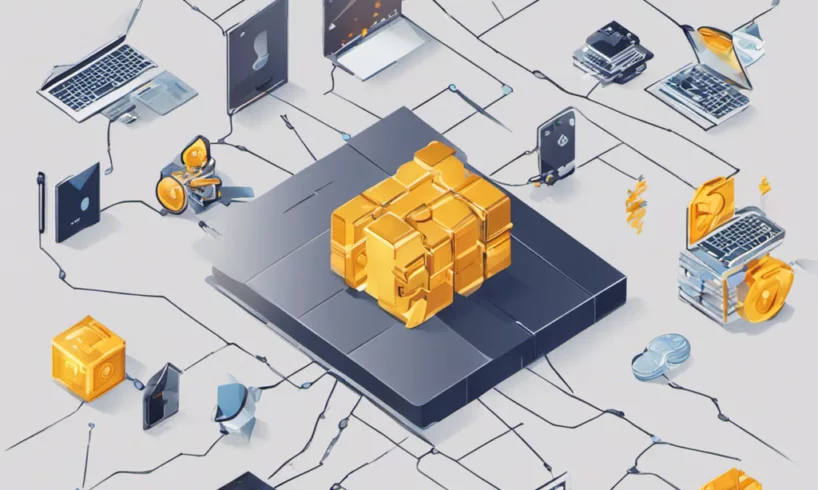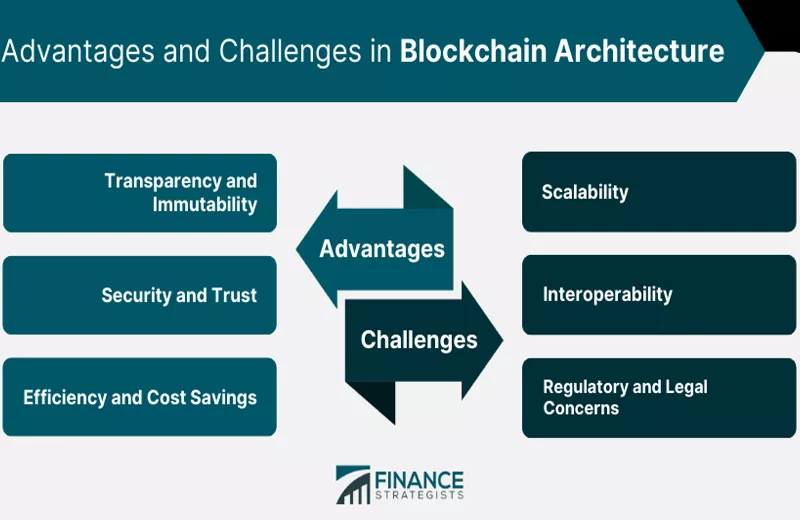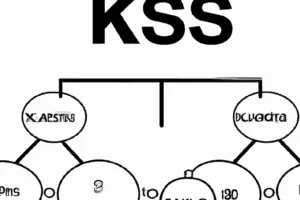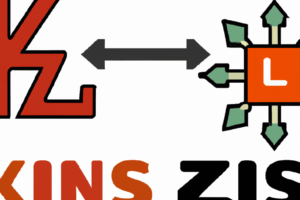
Blockchain technology is transforming industries across the globe. This distributed ledger technology provides unprecedented security, transparency, and decentralization, enabling innovative new applications. This comprehensive guide explores blockchain, how it works, its key benefits, use cases, and the future of this groundbreaking innovation.
Introduction
Blockchain is a revolutionary technology that allows digital information to be distributed without copying. Initially devised for the digital currency Bitcoin, blockchain found its first application in finance in the form of cryptocurrencies. However, the potential uses of blockchain go far beyond cryptocurrency.
What is Blockchain?
A blockchain is a decentralized, distributed digital ledger that records transactions permanently and securely across many computers connected in a peer-to-peer network. Blocks record the transactions and are chained together chronologically to create an immutable record. This distributed ledger technology (DLT) eliminates the need for third-party intermediaries by enabling trust through consensus.
How Does Blockchain Work?
Here is a quick overview of how a blockchain works:
- Transactions are requested and captured in a block
- The block is broadcast to a peer-to-peer network of nodes
- The network of nodes validates the transactions using algorithms
- Once validated, the block is cryptographically linked to the preceding block, forming a chain
- The transaction is complete and added to the ledger across the network
- The ledger is updated on all nodes simultaneously
This decentralized process ensures trust, accountability, and transparency while streamlining business operations.
Benefits of Blockchain Technology
Blockchain technology offers several key benefits:
- Decentralization – No central point of control over the network
- Transparency – All transactions are visible to all participants
- Security – Cryptography and distribution make blockchain resistant to hacking
- Immutability – Transactions cannot be altered or deleted
- Trust – Consensus between nodes enables trustless interactions
- Efficiency – Removes intermediaries, reducing time and costs
- Automation – Smart contracts automate processes via code
Use Cases of Blockchain Technology
Because of its innate characteristics, blockchain technology has widespread applications across industries:
- Cryptocurrencies – Digital currencies use blockchain for transactions
- Supply chain – Improves traceability and transparency of supply chains
- Voting – Secure and tamper-proof voting through blockchain
- Real estate – Tokenize property, automate records, facilitate transactions
- Healthcare – Securely share medical data, improve interoperability
- Identity management – Protect sensitive identity information and documents
- Banking – Facilitate cross-border payments, reduce settlement times
- Insurance – Automate claims through intelligent contracts
Future of Blockchain Technology
Blockchain adoption is still in the early stages. As the technology matures, we can expect greater mainstream adoption across industries. Key trends shaping the future of blockchain include:
- Increased scalability and interoperability between blockchain networks
- Growth of enterprise blockchain solutions
- Further expansion of blockchain-based financial services
- Development of industry-specific blockchain applications
- Government adoption for taxes, voting, and identity
- Hybrid blockchain models that balance privacy and transparency
In the next decade, blockchain could revolutionize trust-based processes and reduce bureaucracy across our economies.
Blockchain Basics: Understanding the Technology Under the Hood
We must first cover the fundamental concepts underpinning this technology to better understand blockchain. These include distributed ledger technology, cryptographic hashing, and decentralized consensus mechanisms.
What is a Distributed Ledger?
A distributed ledger is a shared database across networks across multiple sites, regions, or institutions. All participants can access the record of transactions, enabling full transparency.
There are two main types of distributed ledger:
- Unpermissioned ledgers – Anyone can join the network or participate without permission. Public blockchains like Bitcoin and Ethereum are uncommissioned.
- Permissioned ledgers – Only authorized participants can join the network, like private blockchains.
Key benefits of distributed ledger technology:
- Trust – Participants can exchange assets and data without third-party intermediaries
- Transparency – All transactions are visible to participants on the network
- Security – Data is cryptographically sealed and distributed across many nodes
- Immutability – Transactions cannot be altered; only appended
- Faster dealings – Removes duplication and intermediaries, speeding processes
What are Blocks and Chains?
The “block” and “chain” make up the fundamental structure of a blockchain:
Blocks
- Entries or transactions are recorded in blocks
- Contains metadata like timestamps and a unique cryptographic hash
- Linked to the previous block via the hash, forming a chain
Chains
- Blocks are appended linearly and chronologically to the previous block
- This creates an immutable sequence known as a chain
- The chain continually grows as new blocks join

This chained sequence of blocks provides several advantages:
- Data is decentralized across many nodes
- Transactions are immutable once recorded
- Easy to verify the history of any transaction
What is Cryptography?
Cryptography is vital to the security of blockchain. It enables:
- Hashes – Digital fingerprints of blocks and transactions
- Digital signatures – Mathematical techniques to prove identity
- Encryption – Scrambling of data to protect confidentiality
These cryptographic technologies allow users on the blockchain to remain anonymous while guaranteeing security and legitimacy.
Some specific cryptographic techniques used in blockchain include:
- Hash functions – Produces fixed-length digest of data, like SHA-256
- Merkle trees – Efficient verification of large datasets based on hashes
- Public critical infrastructure – Uses private and public keys for identity and encryption
Overall, cryptography ensures integrity, prevents tampering, and establishes trust in blockchains.
What is Consensus?
For a decentralized blockchain to work, participants must agree on the valid state of the ledger. This agreement is called consensus.
There are several mechanisms used to achieve consensus on blockchains:
- Proof-of-work – Computationally intensive puzzle solving, used by Bitcoin
- Proof-of-stake – Algorithmically randomly selected validators to vote on blocks
- Delegated proof-of-stake – Token holders vote to determine validators
- Practical Byzantine Fault Tolerance – Allows for faster consensus for private blockchains
Consensus enables trustless interactions between participants without requiring third-party intermediaries. This helps circumvent the double spending problem where a token can be spent twice.
Types of Blockchain: Public, Private and Consortium
There are three primary types of blockchain networks, providing different levels of access and trust:
Public Blockchains
Public blockchains allow anyone to join and participate in the network. Transactions are viewable to all participants while still maintaining user privacy through pseudonymous addresses. Public blockchains typically use proof-of-work consensus algorithms.
Examples: Bitcoin, Ethereum, Litecoin
Benefits:
- Completely decentralized and transparent
- Highly secure through cryptography and consensus
- Low barriers to entry increase adoption
Limitations:
- Slow transaction speeds due to consensus mechanisms
- Limited scalability and high energy usage
- No built-in privacy protections beyond pseudonymity
Private Blockchains
Private blockchains require an invitation or permission to join. Access is centrally controlled. Transactions may be restricted and viewable only to participants within the network. Participants are known rather than anonymous.
Examples: Hyperledger, R3 Corda
Benefits:
- Preserves confidentiality through restricted access
- Faster transaction speeds via efficient consensus
- A controlled environment improves scalability
Limitations:
- Requires complete trust of the central authority
- Highly centralized rather than distributed
- Consensus mechanisms can be manipulated
Consortium Blockchains
Consortium blockchains are hybrids between public and private blockchains. A consortium blockchain has authoritative nodes mediated by a legal entity or group of companies. Participation requires an invitation, but transactions are viewable to all nodes.
Examples: Energy Web Chain, Komgo, Libra
Benefits:
- Partial decentralization while maintaining privacy
- Faster transactions than public blockchains
- Controlled participant access improves security
Limitations:
- More centralized than public blockchains
- Requires trust in the controlling entities
- Consensus mechanisms can be manipulated
Blockchain Applications: From Cryptocurrency to Enterprise Solutions
Blockchain technology has expanded far beyond its origins in banking and cryptocurrency. Here, we explore some of the most promising blockchain applications across industries.
Cryptocurrencies
The first widespread blockchain application was Bitcoin, the most popular cryptocurrency. Cryptocurrencies use blockchain technology to enable financial transactions to be decentralized without banks or intermediaries.
How cryptocurrencies work:
- Built on decentralized blockchain ledgers
- Use cryptography for security and validation
- Maintain openly viewable transaction history
- Users identified by cryptographic wallet addresses
Types of cryptocurrencies:
- Bitcoin (BTC)
- Ethereum (ETH)
- Litecoin (LTC)
- Ripple (XRP)
- Monero (XMR)
Benefits of cryptocurrencies:
- Secure, thanks to blockchain and cryptography
- Decentralized with no central authority
- Fast and low-cost cross-border transactions
- Empowers unbanked populations
Limitations of cryptocurrencies:
- High volatility makes them risky investments
- Computing-intensive mining and slow transactions
- Used for cybercrime due to pseudo-anonymity
- Unregulated in many jurisdictions
Decentralized Finance (DeFi)
Decentralized finance utilizes blockchain technology to transform financial services. DeFi aims to reconstruct the financial system into a transparent, open-source, peer-to-peer network.
Critical features of DeFi:
- Uses public blockchain networks like Ethereum
- Eliminates centralized intermediaries
- Financial applications based on smart contracts
- Composable services that can integrate
Benefits of DeFi:
- Accessible to anyone with an internet connection
- Transparent processes improve trust
- Interoperability between services and products
- Customizable financial products
Limitations of DeFi:
- Nascent industry with elevated risks
- Highly complex and technical
- Over-collateralization required for loans
- Vulnerable to exploits and attacks
Non-Fungible Tokens (NFTs)
Non-fungible tokens are cryptographic assets on a blockchain representing ownership of unique physical or digital items like art, videos, music, and more.
How NFTs work:
- Built using the same blockchain technology as a cryptocurrency
- Unique cryptographic tokens that prove ownership
- Associated metadata immutably confirms authenticity
- Traded securely on NFT marketplaces
Types of NFTs:
- Digital artwork and collectibles
- Domain names
- Physical assets like real estate
- Sports video highlights
- Music and entertainment IP
Benefits of NFTs:
- Proof of scarcity and authenticity
- Owners gain royalty rights
- Ability to trace ownership history
- Accessible marketplace for digital creations
- Unlock new business models for content
Limitations of NFTs:
- Very speculative assets vulnerable to crashes
- Subject to fraud and theft
- Lack of regulations around IP rights
- Environmental impact of minting NFTs
- Legal gray area for enforcing ownership
Supply Chain Management
Blockchain brings game-changing benefits to supply chain management, including greater transparency, traceability, and efficiency.
Critical applications in the supply chain:
- Tracking provenance of materials and products
- Streamlining trade finance and documentation
- Improving inventory management and product recalls
- Increasing automation with smart contracts
Benefits for supply chains:
- Provides real-time visibility at every link
- Builds trust through immutable audit trails
- Reduces delays from paper documentation
- Lowers costs by eliminating intermediaries
Limitations and challenges:
- Scaling blockchain networks to enterprise levels
- Integration with legacy supply chain systems
- Onboarding all players in a supply chain ecosystem
- Uncertainty around return on investment
Voting Systems
By enabling immutable, transparent, and tamper-proof record keeping, blockchain technology has promising applications for improving election security and turnout.
How Blockchain Enables Secure Digital Voting:
- Voters are issued unique digital identities
- Votes are recorded on blockchain ledgers
- Encrypted votes remain private while the ledger provides a verifiable public record
- Redundant recording on ledgers prevents centralized attack vectors
Benefits of blockchain voting:
- Tamper-proof votes cannot be altered or deleted
- Reduces opportunities for ballot stuffing or vote miscounts
- Enables remote voting and increases voter turnout
- Faster counting and results reporting
- Lower long-term costs than physical infrastructure
Limitations and challenges:
- Scaling networks to handle millions of voters
- Voter understanding and adoption of new systems
- Accessibility limitations around digital identity
- Setting clear regulations around governance
Healthcare
Blockchain applications are emerging to solve pressing issues in healthcare, from securely sharing medical data to pharmaceutical supply chain tracking.
Critical healthcare use cases:
- Electronic health records interoperability
- Secure data sharing across institutions
- Clinical trial records and management
- Medical supply chain monitoring
- Insurance claim processing automation
Benefits of blockchain in healthcare:
- Enables patients to own and control their health records
- Improves security and privacy of sensitive medical data
- Builds trust and transparency across networks
- Accelerates research and clinical trials
Limitations and challenges:
- Integrating with legacy health IT systems
- Unclear regulations around patient data privacy
- Scaling networks to the national level
- Healthcare industry's reluctance to share data
- Uncertainty around return on investment
Identity Management
Blockchain systems offer a potential solution to the growing problem of digital identity threats like fraud, theft, and misuse of personal data.
Key features of blockchain identity management:
- Users control their digital identities
- Encrypted identity documents are stored on the blockchain
- Selective disclosure enables sharing only necessary data
- Immutable ledger prevents document tampering
Benefits of blockchain identity management:
- Prevent identity document fraud and theft
- Greater privacy and control over personal data
- Securely verify identities without exposing sensitive details
- Simplify KYC and compliance processes
Limitations and challenges:
- Integrating with existing identity systems
- Low adoption and understanding among users
- Unclear legal status of blockchain identity records
- Concerns around user experience and accessibility
Real Estate
Blockchain shows early signs of disrupting real estate by enabling fractional ownership, automating transactions, and streamlining record keeping.
Critical applications of blockchain in real estate:
- Tokenization of property as tradable shares
- Automated transfers, titles, and paperwork
- Secure record-keeping for titles, deeds, and leases
- Decentralized financing opportunities
Benefits of blockchain for real estate:
- 24/7 trading enables greater liquidity
- Automates and streamlines transactions
- Improves transparency of ownership records
- Enables global investing in fractional properties
Limitations and challenges:
- Volatile cryptocurrency values introduce risk
- Integrating with legacy property databases
- Unclear regulations around blockchain real estate
- Tokenized real estate remains unproven
Despite limitations, blockchain real estate holds revolutionary potential to increase investment access, transaction speed, and record security.
Developing Blockchain Projects: Languages, Frameworks and Tools
Developers have various options for building blockchain applications, from general-purpose programming languages to specialized frameworks.
Blockchain Programming Languages
While any programming language can write software interacting with blockchains, specific languages are specifically designed for blockchain projects.
Popular blockchain programming languages:
- Solidity – Object-oriented language for writing Ethereum smart contracts
- Simplicity – Blockchain language focused on verifiable correctness
- Vyper – Pythonic language for Ethereum emphasizing security
- Ride – High-level language for the Waves blockchain platform
Key features of blockchain languages:
- Built-in cryptographic primitives like hashes and keys
- Native asset and account abstractions
- Support for verifying contract correctness
- Built with security and robustness in mind
Choosing a blockchain language involves tradeoffs between ease of use and security. Simplicity or Vyper provides strong guarantees but greater complexity.
Blockchain Development Frameworks
Frameworks provide integrated environments for building and deploying blockchain applications.
Leading blockchain frameworks:
- Hyperledger – Open source framework for enterprise blockchains
- Ethereum – Platform for decentralized apps and smart contracts
- Corda – Distributed ledger platform designed for finance
- Quorum – Enterprise-focused distribution of Ethereum
Key features of blockchain frameworks:
- End-to-end platforms with broad tooling
- Modular architecture for building applications
- Support for permissions and access controls
- Consensus mechanisms optimized for performance
Frameworks allow developers to focus on application logic rather than blockchain protocols and infrastructure.
Blockchain Development Tools
Beyond core languages and frameworks, developers use supporting tools for blockchain projects:
Blockchain IDEs – All-in-one development environments like Remix and Embark
Testing frameworks – Tools to simulate and test smart contracts and transactions
Block explorers – Enable inspection and visualization of blockchain data
Wallets and accounts – Secure storage and access to blockchain assets
Ensuring Security in Blockchain Applications
While blockchain technology provides inherent security benefits, blockchain-based systems remain vulnerable to bugs, exploits, and attacks like any software.
Common Blockchain Vulnerabilities and Attacks
Due to the immutable nature of blockchain data, applications must be robust against all forms of compromise from the outset. Common blockchain attack vectors include:
- 51% attacks – Attacker controls 51% of mining power to manipulate consensus
- Sybil attacks – The attacker floods the network with nodes to disrupt the system
- Phishing – Users duped into revealing keys, passwords, or information
- Smart contract bugs – Code vulnerabilities like reentrancy or overflow
- Transaction-ordering attacks – Manipulate order transactions are processed
- Short address attack – Typosquatting on addresses that are one character off
- Eclipse attacks – Isolate node and feed false information
These highlight the need for rigorous design and testing of blockchain systems before deployment.
Blockchain Security Best Practices
By following industry standards and established design patterns, blockchain developers can maximize the inherent security of blockchain technology.
Tips for developing secure blockchain applications:
- Formally verify smart contracts for correctness
- Use defensive programming techniques like checks-effects-interactions
- Undergo comprehensive smart contract auditing
- Run simulations to test boundary conditions
- Apply principles like least privilege and fail-safe defaults
- Organize code into upgradeable modules for patching
Tips for interfacing with blockchain applications:
- Use hardware wallets for secure key management
- Verify blockchain application URLs for phishing attempts
- Never share private keys or passwords
- Only sign transactions after reviewing details
- Use VPNs or Tor when accessing blockchain services to obscure identity
- Keep devices up-to-date with the latest security patches
Diligent design, testing, and adoption of best practices can minimize risks across blockchain systems.
The Revolutionary Potential of Blockchain Technology
Blockchain stands poised to revolutionize trust-based processes across industries. Blockchain could significantly reduce bureaucracy and administrative costs by eliminating intermediaries and enabling secure collaboration across networks.
However, mainstream blockchain adoption remains elusive. Challenges around scalability, interoperability, regulation, and privacy must be addressed before blockchain technology can achieve its full disruptive potential.
In the years ahead, expect to see critical breakthroughs around:
- Enterprise blockchains – Major progress in private and consortium blockchain adoption
- Blockchain interoperability – Cross-chain communication and standards
- Blockchain scalability – Through layer two systems and side-chains
- Blockchain privacy – Confidential transactions and zero-knowledge proofs
- Blockchain governance – Processes for upgrading protocols and settling disputes
Beyond hype and speculation, blockchain technology promises to transform the basic digital frameworks of finance, governance, identity, and trust. Realizing this enormous potential rests on advancing blockchain research and engineering and educating regulators and end users.
By taking the time to understand the technology properly, we can unlock blockchain's benefits while proactively addressing risks and limitations. In the coming decade and beyond, blockchain will steadily progress from a buzzword to a fundamental infrastructure underpinning the digital world.
Key Blockchain Terminology
Block – Container that batches transactions and records them in the blockchain ledger. Contains metadata and a hash.
Blockchain – Chronological ledger consisting of cryptographically linked blocks distributed across a decentralized peer-to-peer network. Provides tamper-resistance and data integrity.
Consensus – Algorithm through which distributed nodes on a blockchain network agree on the state of the blockchain ledger. Enables trustless coordination.
Cryptography – Branch of mathematics used extensively in blockchain to secure communications and validate transactions through encryption, hashing, and digital signatures.
Decentralized Application (DApp) – Software program built on a decentralized blockchain network architecture. It can include cryptocurrencies, financial services, games, and more.
Distributed Ledger Technology – Database spread across multiple sites, regions, or participants with shared read/write access. Blockchain is a form of distributed ledger. Enables decentralization.
Hash – Fixed length cryptographic fingerprint of data produced by a hash function and used in blockchains for digital signatures and data integrity.
Miner – Blockchain network nodes that add new blocks to the blockchain by solving a computational puzzle, currently predominantly through proof-of-work.
Node – Participant in a blockchain network that stores a local copy of the blockchain ledger and validates transactions.
Peer-to-Peer (P2P) Network – Architecture where nodes directly connect rather than through a central server. Enables decentralization.
Proof-of-work (PoW) – Consensus mechanism that requires miners to expend computational effort to add new blocks. Used by Bitcoin and Ethereum. Energy intensive.
Proof-of-stake (PoS) – Consensus mechanism where miners are randomly selected to validate blocks based on the proportion of stake held in the blockchain's tokens. Less energy intensive than PoW.
Public Key Cryptography – Use mathematically linked private and public encryption keys for identity and security. Vital to blockchain transaction signing and validation.
Smart Contract – Self-executing program on a blockchain containing contract terms that execute automatically when conditions are met. Enable blockchain automation.
Token – Digital asset native to a particular blockchain, representing a utility like payment services, staking collateral, governance rights, or more.
Leading Blockchain Platforms and Cryptocurrencies
| Platform | Description | Native Cryptocurrency | Consensus Mechanism |
|---|---|---|---|
| Bitcoin | First decentralized cryptocurrency and blockchain | Bitcoin (BTC) | Proof-of-work |
| Ethereum | Distributed computing platform for DApps and smart contracts | Ether (ETH) | Currently PoW, moving to PoS |
| Cardano | Blockchain platform built for security and scalability | Ada (ADA) | Ouroboros PoS |
| Solana | High performance blockchain focused on speed and efficiency | Solana (SOL) | Proof-of-history |
| Polkadot | Scalable heterogeneous blockchain network | DOT | NPoS |
| Algorand | Carbon-negative blockchain for finance and beyond | Algo | Pure PoS |
| Terra | Stablecoin blockchain ecosystem | LUNA | Tendermint pBFT |
| Avalanche | Smart contract platform aiming for Visa-level speeds | AVAX | Snowman consensus |
| Cosmos | Network of interoperable blockchains | ATOM | Tendermint pBFT |
Largest NFT Marketplaces
| Marketplace | Blockchain | Sales Volume 2021 |
|---|---|---|
| OpenSea | Ethereum | $10.7 billion |
| Axie Infinity | Ethereum | $3.6 billion |
| CryptoPunks | Ethereum | $2.5 billion |
| NBA Top Shot | Flow | $781 million |
| Rarible | Ethereum | $699 million |
Leading Enterprise Blockchain Platforms
| Platform | Description | Consensus | Orientation |
|---|---|---|---|
| Hyperledger Fabric | Modular toolkit for building enterprise blockchains | RBFT, Raft, SBFT | Private |
| R3 Corda | Distributed ledger platform designed for finance | Notary architecture | Consortium |
| Hyperledger Sawtooth | Enterprise blockchain for building distributed ledgers | PoET | Hybrid |
| Hyperledger Indy | Decentralized identity on permissioned blockchains | Plenum Byzantine fault tolerance | Consortium |
| Hyperledger Besu | Ethereum client for enterprise | PoA, IBFT | Consortium |
| Hyperledger Grid | Supply chain focused blockchain | RBFT | Consortium |
| Hyperledger Iroha | Simple implementation focused on mobile | YAC | Private |
Blockchain technology shows immense promise to revolutionize various industries ranging from finance to supply chains, healthcare, identity, and beyond. While still at a nascent stage of maturity, critical innovations around scalability, interoperability, regulation, and more continue advancing blockchain systems from abstract potential to concrete reality. By objectively understanding blockchain's capabilities and current limitations, we can harness this technology for social and economic benefit while mitigating risks. The next decade will prove whether blockchain can fulfill its lofty potential to rearchitect digital trust frameworks and reduce bureaucracy across the global economy.

George Smith, with over a decade in tech journalism, excels in breaking down emerging tech trends. His work, spanning tech blogs and print, combines in-depth analysis with clarity, appealing to a wide readership. George's pieces often explore technology's societal impact, showcasing his foresight in industry trends.







